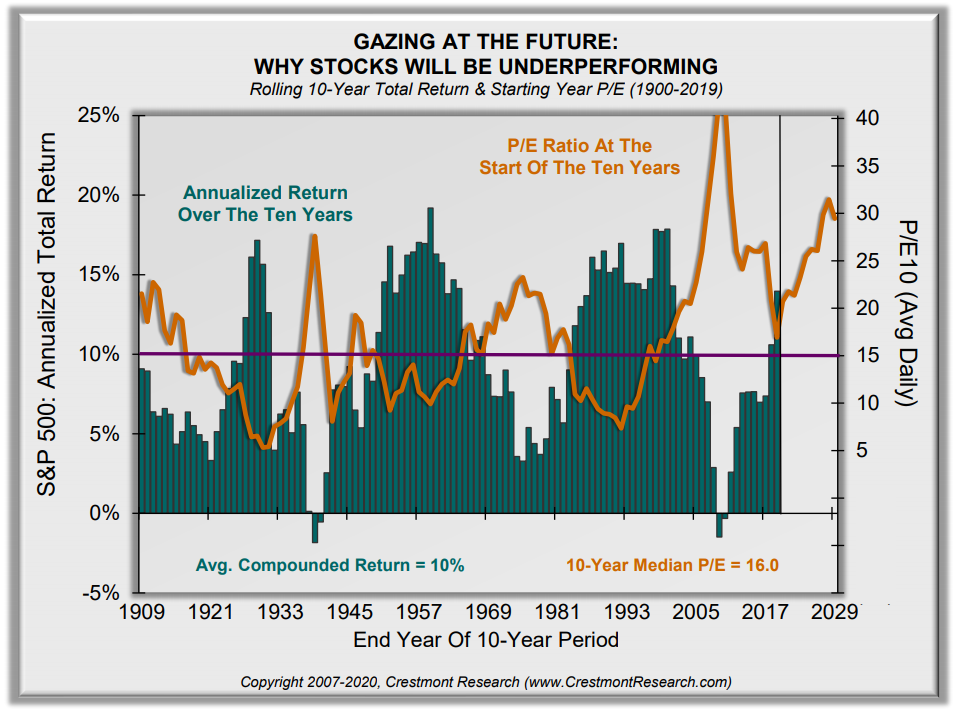A new year can bring fresh ideas and brave new commitments that most of us will, unfortunately, simply forget about over the course of the year. The difference between those who are successful and those who aren’t is consistency and persistence. It takes commitment to stick to a plan in order to obtain success.
Our own human nature tends to work against us, especially in the new age of social media where everyone is trying to grab our attention. Our attention spans are shrinking. As a case in point, most marketing experts now advise that you have less than seven seconds (the attention span of a goldfish) in order to grab someone’s interest when they land on a new website before they exit.
It is little wonder then, that many of us flock to the forecasts of ‘market experts’ as we seek out the next big thing. After all, sticking to our long-term plan is so boring. We forget that wealth is not built overnight – unless you happen to hit the jackpot, it takes time.
Now it’s probably taken you more than seven seconds to read this far, so the goldfish amongst us have already closed the article and left. For the rest of us, I thought it would be interesting to reflect quickly on the decade that was, before highlighting what we are watching for the year(s) ahead.
The decade that was
Australia last had a recession in September 1991, some 28 years ago, so the past decade has really been no different from the previous one from an economic perspective (judged purely on economic growth rather than the financial mess of the GFC). Interestingly, despite all the fears of economic slowdowns, central bank actions, threats of new trade wars and unpredictable politicians, America just had its first decade without a recession since 1850.
For the year and decade ended 31 December 2019 global markets recorded strong gains as highlighted below.

The returns noted above highlight just how beneficial the US Federal Reserve’s quantitative easing programs have been to its equity markets. The surprise success above, must go to the New Zealand exchange.
In looking forward to the next 12 months to 10 years, I may disappoint some of you as I will not be providing ‘click bait’ attention grabbing headlines. I will however provide some educated guesses but please keep in mind, these are guesses and are not guaranteed outcomes.
Where to from here?
Undoubtedly, we are in a new financial era. We have seen unprecedented fiscal measures by the world’s biggest central banks and it certainly appears that they won’t be stopping anytime soon.
Interest rates are incredibly low throughout the world and I don’t think we will see them move significantly higher for a few years to come. Central banks will find it very difficult to push rates materially higher without inflation, which won’t happen unless we see wage growth and dramatically higher retail spending.
For investors, that has significant ramifications. With interest rates set to remain low, conservative investors will continue to struggle to generate meaningful returns. Low interest rates are likely to support growth assets such as shares, infrastructure and property, although I would not be banking on similar returns to those witnessed last year.
I think our own reserve bank will cut interest rates at least once this year before instigating its own quantitative easing towards the end of the year. This will, however, be dependent upon the Federal Government’s fiscal response.
Prior to the bushfire catastrophe that is still raging, the Federal Government was adamant it would hold onto its surplus, despite the pleading of so many economists for additional economic stimulus. It is fair to say that the Government’s handling of the recent crisis has not been its finest moment and that has forced the Prime Minister to state that the surplus was no focus of his and that he would meet whatever costs are necessary to help Australians get back on their feet.
We will have to wait to see what those costs are, and exactly how much of the surplus he is prepared to forgo, but such economic stimulus is likely to mean that Australia will continue to extend its recession-free record.
With the US heading into elections in November this year, President Trump will want to make deals and appear strong. It is very unlikely that he will be forced out of the Presidency, and a very real possibility that he will be re-elected again.
The first round of a trade deal with China is expected to be signed next month, although any further extensions are unlikely before the election. No doubt there will be plenty of curve balls thrown at markets over the next 11 months as he ramps up his twitter usage and bluff.
Looking past 2020, the one overriding thing that occupies our attention is the following chart from Crestmont Research. The chart shows the rolling 10-year returns from the US S&P 500 index when mapped against the Price to Earnings (PE) ratio at the start of that 10-year period.

You will note that when PE levels have been at inflated levels (as they are now) the subsequent 10-year returns have been lower. Conversely when PE levels have been low at the start of the period, returns have been higher.
I am sure I can hear some people screaming “but it is different this time as interest rates and inflation are so low, so equity returns must remain high”. Perhaps they are right, as we are living in an unusual economic experiment, but are you prepared to bet all of your wealth on it?
What do we think about the chart above? Barring a recession, we don’t think equity returns will crash into negative territory. Keep in mind that these are 10-year rolling returns and there have only been four negative periods since 1900.
Equity returns are likely to be higher than cash rates for the foreseeable future, but overall returns will be lower over the coming decades until PE levels revert back to normalised levels, and that can only be achieved by earnings climbing or prices retreating. Undoubtedly the next 10 years will see market pullbacks but as to when they will occur – your guess will be as good as mine.
If you are planning on retiring in the next 10 years or building your savings in preparation for retirement, we think you should factor in lower returns. After all, if we are wrong and returns continue to push higher you will be pleasantly surprised.

We can’t control economies, politics or markets but we can help you stick to your long-term plan. In the long run, any future market correction is going to register as another small dip on a line that continues to trend upwards. As you’ve probably heard us say before, sticking to your long-term plan is a much safer and more reliable strategy than trying to ‘time’ your savings and investments based on today’s headlines.
The more prepared you are for things you CAN predict – like kid’s education costs, future holidays, home renovations – the better equipped you’ll be to adjust for things you can’t predict.
Call us up today and let’s discuss how we can help you make 2020 another prosperous year.
Andrew Aylward is Chief Investment Officer at Keep Wealth Partners.
Keep Wealth Partners Pty Ltd (AFSL 494858). This information is of a general nature only and may not be relevant to your particular circumstances. The circumstances of each investor are different and you should seek advice from a financial planner who can consider if the strategies and products are right for you.







